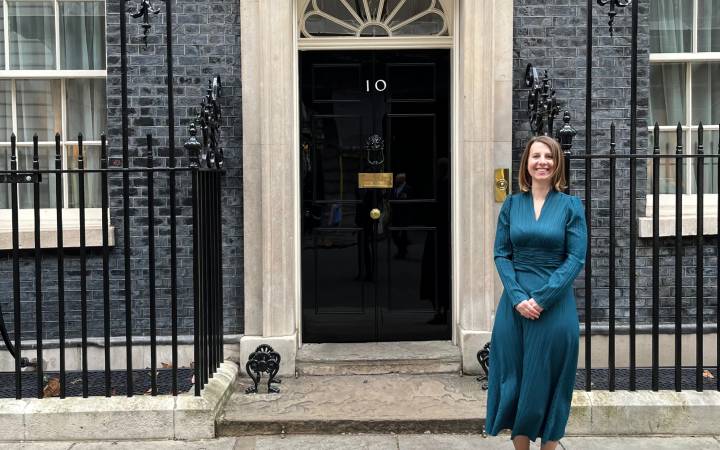Handmade spaces: an exploration of built space, practices, memory and affect in a South London former squatting community
Posted Wednesday 4 January 2012
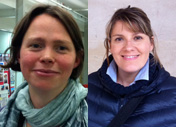 Handmade spaces is a collaborative project we have been working on since 2009. The aim was to explore how urban spaces, rather than just being the 'fixed' outcome of formal urban design, are the result of social and relational processes: for example, people's activities, uses of and attachment to a space.
Handmade spaces is a collaborative project we have been working on since 2009. The aim was to explore how urban spaces, rather than just being the 'fixed' outcome of formal urban design, are the result of social and relational processes: for example, people's activities, uses of and attachment to a space.
Our project took us on a fascinating journey through some residents' memories and attachment to their own community, and gave us the opportunity to link with debates on human geography, planning, community studies and sociology.
W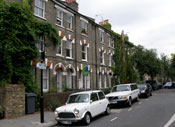 e started by looking for an everyday, ordinary (rather than a designed) space. We chose Bonnington Square, a small neighbourhood in South London, located between Vauxhall station and the Oval in the Borough of Lambeth, renown among young urbanites not only for its bohemian atmosphere, its communal gardens, a friendly deli and an old vegetarian café, but also for its squatting history.
e started by looking for an everyday, ordinary (rather than a designed) space. We chose Bonnington Square, a small neighbourhood in South London, located between Vauxhall station and the Oval in the Borough of Lambeth, renown among young urbanites not only for its bohemian atmosphere, its communal gardens, a friendly deli and an old vegetarian café, but also for its squatting history.
During the last 30 years, residents have consolidated practices of collective actions on transforming their local environment. These offered relevant insights into the way we relate to and transform spaces: from local gardening to housing transformation, from active residents associations to community activism.
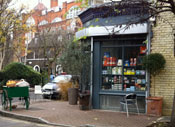 Bonnington Square is a small Victorian neighbourhood that experienced progressive dereliction of its housing stock throughout the 1900s, but which also experienced a slow 'handmade' regeneration process from the early 1980s when some squatters occupied and settled in the derelict properties around the square.
Bonnington Square is a small Victorian neighbourhood that experienced progressive dereliction of its housing stock throughout the 1900s, but which also experienced a slow 'handmade' regeneration process from the early 1980s when some squatters occupied and settled in the derelict properties around the square.
At that time, the properties were mainly owned by the Inner London Education Authority (ILEA), who had acquired them from the Greater London Council (GLC). ILEA planned to demolish them and create a new playground around the existing local school. And yet, although the previous council tenants had even been evicted and relocated, the new development never happened. When the first squatters arrived, these properties, abandoned for such a long time, were in poor condition and in need of lots of work to be appropriate places to live in.
With its three bombsites still from WWII and no green spaces, 'it was like driving in Belfast', as one of the residents commented (Interview 7, 13 March 2010).
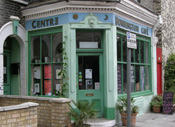 Despite the constant risks of being evicted from the area, the new and extremely diverse community of residents not only progressively renovated the properties, but initiated street planting, created communal gardens on old bomb sites, organised theatre performances and established a number of community spaces which still exist today: a community centre, a communal kitchen (which later became the Bonnington café and which is still run by community cooks) and two gardening groups which continues to maintain the communal gardens.
Despite the constant risks of being evicted from the area, the new and extremely diverse community of residents not only progressively renovated the properties, but initiated street planting, created communal gardens on old bomb sites, organised theatre performances and established a number of community spaces which still exist today: a community centre, a communal kitchen (which later became the Bonnington café and which is still run by community cooks) and two gardening groups which continues to maintain the communal gardens.
When ILEA was abolished in the early 1990s, the properties were sold and the squatter community was given the opportunity to buy them through housing coops or privately.
After 30 years, no squats remain and most buildings are occupied by owners or tenants. Yet, the history of the square is still very much part of the social and cultural make-up of the square today. Memories and images of Bonnington Square, as an alternative community with a cultural and artistic flare and commune of artists, still persist. Despite inevitable gentrification processes, most of the original squatters still live in the square today and many, together with some of the newcomers, still strive to keep alive what they describe as the 'ethos' of Bonnington Square.
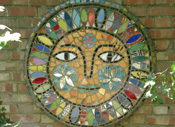 Methodologically, our investigation was based on visual ethnography, participant observation and, most of all, walking interviews with different groups of residents. The participants, partly former squatters and partly new residents, agreed to take us through the fascinating journey of their memories (often with a high degree of emotion) by walking with us around the square and guiding us to what they considered their meaningful places. The walks we took – all documented with photos and maps – were all very different from each other. Yet, they all reflected a unique attachment and a sense of belonging to the square's past and present history. Some participants took us through the gardens showing us specific bushes and trees, some pointed out certain houses, corners, mosaics or even just scribbles on particular walls. Others chose to sit at the table outside the Bonnington Deli and generously shared their memories with us while drinking coffee. Some recalled a house covered top to bottom by newspapers by a local artist as a form of protest against the risk of eviction and others talked to us about a wonderful mural now covered by the wall of a new house. Some shared with us the inevitable tensions and the presence of local frightening 'characters' but also of inspiring social innovators.
Methodologically, our investigation was based on visual ethnography, participant observation and, most of all, walking interviews with different groups of residents. The participants, partly former squatters and partly new residents, agreed to take us through the fascinating journey of their memories (often with a high degree of emotion) by walking with us around the square and guiding us to what they considered their meaningful places. The walks we took – all documented with photos and maps – were all very different from each other. Yet, they all reflected a unique attachment and a sense of belonging to the square's past and present history. Some participants took us through the gardens showing us specific bushes and trees, some pointed out certain houses, corners, mosaics or even just scribbles on particular walls. Others chose to sit at the table outside the Bonnington Deli and generously shared their memories with us while drinking coffee. Some recalled a house covered top to bottom by newspapers by a local artist as a form of protest against the risk of eviction and others talked to us about a wonderful mural now covered by the wall of a new house. Some shared with us the inevitable tensions and the presence of local frightening 'characters' but also of inspiring social innovators.
As a result of all the interviews, a delicate thread started to progressively emerge and form an invisible and delicate texture/fabric of images, relations, attachment, memories to the area developed and consolidated over the years through people's involvement in their 'making of places'.
Currently, we are working on academic papers based on two major themes that distinctively emerged from the relationship between people and their own built environment:
- how spaces are constantly made (and also unmade) through everyday human practices and the value of their 'handmade' dimension. As some squatters recalled in relation to the regeneration of the properties and the making of the gardens, '[when we arrived] everything was stripped. The plumbing, the floorboard...There were no pipes and the phone was off. [Council] tenants had just gone…We ended up breaking in other houses…a bath, a toilet…we got bits and pieces from other houses. We all did ourselves' (Interview 5, 18 February 2010). Having some professional gardeners involved would change what was called the 'ethos' of the garden 'I just think it is ok if we could get some gardeners that come and do the work. It would make our lives easy for us but it would change the ethos [of the garden] and I cannot say why and I haven't thought it through, but it is true…It is not about ownership. It is responsibility' (Interview 8, 13 March 2010); and
- the role of stories and memories (both personal and passed on), but also of gossips, in shaping a place. 'My son was eight. I was a homless single mother. It is a long story…I had to leave the house I was living and came to London. I moved to n… in one little room and there were quite a few of us. It was quite over crowded. Kevin, a cat, adopted us' (Interview 2, 25 August 2009). 'There was a couple that lived there and one day she walked out on the husband and left. She left the door open and that was it. It was squatted.' (Interview 1, 1 July 2009).
By Dr Silvia Gullino and Dr Heidi Seetzen
Dr Silvia Gullino is senior lecturer in spatial planning in the Faculty of Art, Design & Architecture. She is a qualified architect and wrote her PhD thesis on the experiences of sustainable urban regeneration in the UK. Her research interests are related to the urban spaces of everyday life (public spaces, local retail and transport stations) and how they can contribute to the meaning of social sustainability.
Dr Heidi Seetzen is senior lecturer in sociology in the Faculty of Arts and Social Sciences. She has previously worked on a project funded by the ESRC and the UK Home Office looking at black and minority ethnic communities in Kingston, which explored the extent to which they participate in the community life of the borough and identifying barriers to local engagement. She has also published on the renewal of Deptford creekside.
Contact us
- For non-student research enquiries, email the Research Support Office
- Research Support Office contacts
- Graduate Research School contacts
- Business and Enterprise Centre contacts
- How to get to Kingston University
